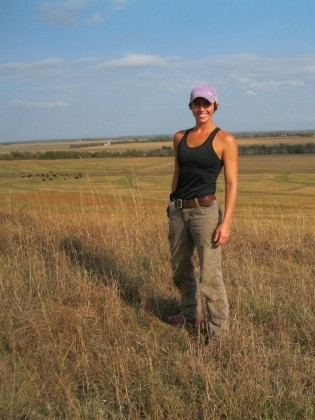Areas of interest
Paleoecology of Stone Age hunter-gatherers, MSA-LSA cultural transition & “early” Later Stone Age, Landscape Geomorphology, Microarchaeology, Paleopedology
Education
- MA: Anthropology, Texas State University, San Marcos, TX (2019)
- BSc: Anthropology, Texas State University, San Marcos, TX (2014)
Biography
I began working at Erfkroon as an undergraduate at Texas State University in 2012. My involvement as a research assistant developed into a collaboration when I decided to maintain my involvement as a master’s student following completion of my bachelor’s degree. My master’s thesis, “Paleoenvironmental Reconstruction using Geoproxy Evidence at Erfkroon, South Africa,” presents one of the highest-resolution geomorphological studies of the region to-date. Now, as a PhD student under the mentorship of Dr. Francesco Berna, I am developing a research plan to expand on my previous studies. My intentions are to utilize microarchaeological techniques to detect paleoenvironmental and climatic signatures associated with past land surfaces, and to ultimately, develop a spatially and temporally specific model for late Pleistocene (MIS 3-2) paleoenvironment and climate associated with known transitional MSA-LSA, or “early” Later Stone Age, occupations.
PhD Research
My PhD research is affiliated with the Modder River Paleontological and Archaeological Project which is an ongoing investigative study of Stone Age human occupations in the Modder River Valley of South Africa’s central interior. This a collaborative and multi-disciplinary effort led by Dr. Lloyd Rossouw, Director of the National Museum of Bloemfontein’s Florisbad Quaternary Research Department, and Dr. Britt Bousman, Professor in the Department of Anthropology at Texas State University. Though several sites are currently under investigation, my research is focused on the region known as Erfkroon.
The Erfkroon archaeological complex is situated in South Africa’s western Free State Province, and refers to an extensive Pleistocene-age alluvial terrace system containing evidence for human occupation spanning ~120,000 years. The area’s highly visible and well-stratified deposits contain dozens of archaeological sites as well as extraordinarily well-preserved Quaternary-age fossils. My research at Erfkroon is focused on reconstructing human-occupied, late Pleistocene landscapes. Specifically, I am interested in paleoenvironmental conditions and episodes of climate change framing the Middle (MSA) to Later (LSA) Stone Age cultural transition. The MSA-LSA transition describes widespread behavioral and technological changes considered antecedent to sociocultural systems and behaviors expressed by modern hunter-gatherer communities. The nature, timing, and tempo of this interval remains poorly understood, as does its relationship with significant periods of climatic instability characterizing the late and terminal Pleistocene.


